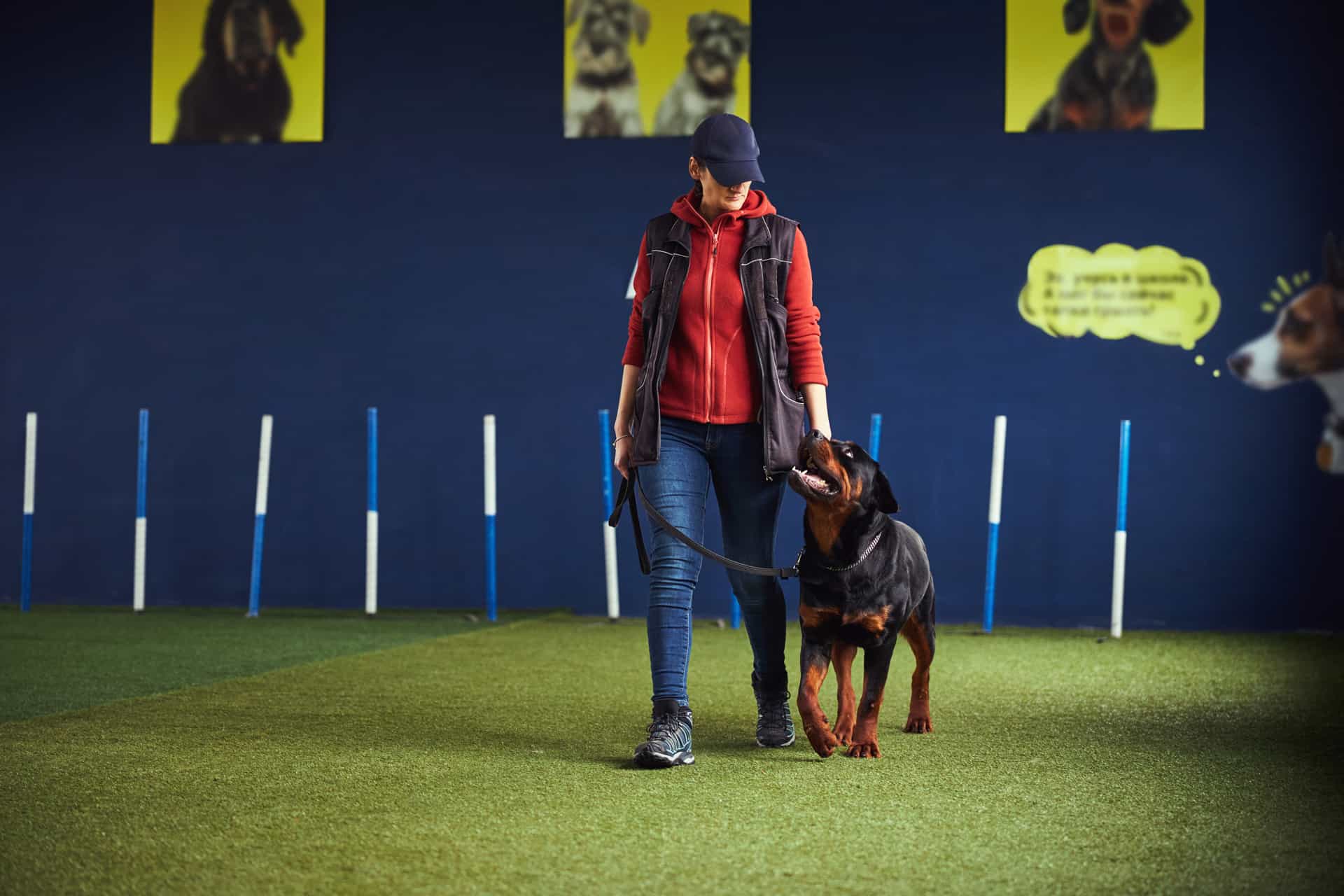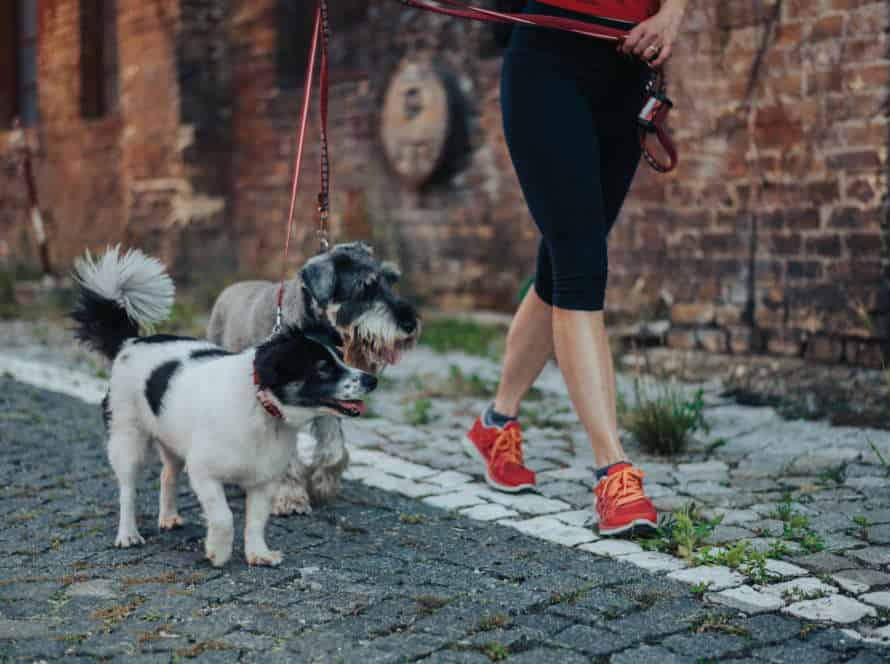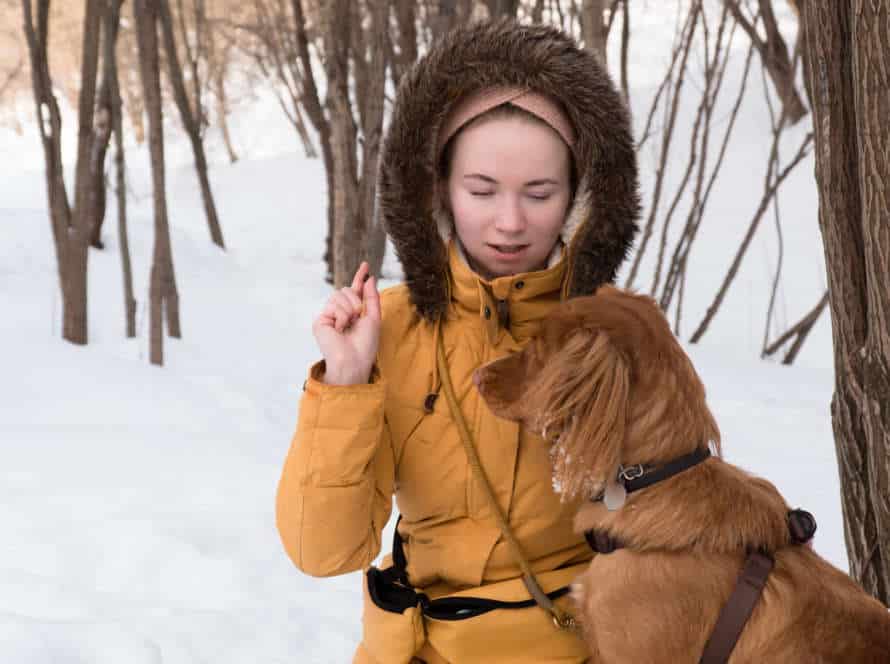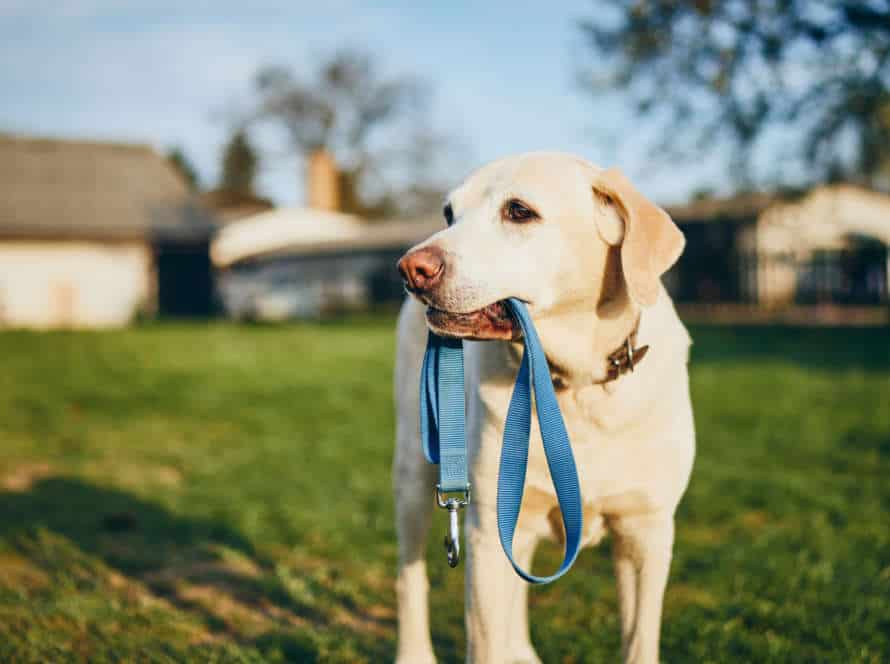The Heel Command: Teaching Your Dog to Walk Politely by Your Side
Want to train your pup to walk by your side nicely? Heel command is the way to go! Here’s how:
- Take your pup to a quiet, distraction-free place.
- Begin walking at a moderate pace, with pup on leash, next to you.
- Say “heel” in a firm, clear tone.
- Reward pup with treats or praise for walking without pulling or lagging behind.
- Be consistent and practice regularly to get desired behaviour.
Heel command can be tricky, but it will make your daily walks with your furry companion much nicer.
Why Teaching Your Dog to Heel is Important
Heel command? Essential! It stops your pup from pulling ahead on the leash. Plus, it helps your dog stay calm and focused. Teaching your dog to heel is great. It increases your control of your pup, and helps them respect what you’re asking. Let’s explore why this obedience training command is so important.
Benefits of teaching your dog to heel
Training your pup to heel is really important! It helps them walk politely by your side and pay attention. Here’s why you should do it:
- Focus: Heeling trains your four-legged friend to concentrate on you. It helps direct their energy to the training.
- Safety: Doggos with leash manners and who understand the heel command are easier to control in public. It helps keep them safe and stops them from running off after distractions.
- Socialization: Pups that know heel commands are usually better socialized. They know how to behave with other people and pooches on leashes.
Pro Tip: Begin training your dog early so they have time to learn. Be consistent with the training too, so they pick up the commands quickly.
Situations where a dog that heels is necessary
Teaching your pup to heel is a must! It’s great for various occasions when you want your pup to behave and listen to your orders.
Here are some of the times when a well-trained pup will come in handy:
- Walking in Busy Areas – If you live in a bustling area or often visit crowded places, it’s important to have your pup walk by your side without getting distracted or running off.
- Vet Visits – Dogs tend to get nervous in new environments. Heeling during a vet visit will help them stay calm and within your control.
- Public Transport – When travelling with your pup on public transport, it’s essential to have them heel and sit beside you, to avoid any trouble for other passengers.
- Emergency Situations – In urgent moments when your pup needs to be restrained, the heel command will bring them under control quickly and safely.
The heel command shows your authority over your pup, and also provides exercise and stimulation. Practice it frequently to keep your pup obedient and polite in all situations.
Differences between proper heeling and loose-leash walking
Heeling and loose-leash walking are both techniques of walking your dog on a leash. But, there are key differences.
Heeling is structured. Your pup stays right by your side, with no tension on the leash. Loose-leash walking offers more freedom. There’s slack in the leash and your pup can explore more.
Safety is a big reason to teach your dog to heel. It keeps them under control in busy areas or around other dogs. Plus, it cements you as pack leader and shows obedience and discipline.
Loose-leash walking is great for casual strolls. But, heeling is important too.
Pro tip: Positive reinforcement like treats and praise are your best bet for teaching your pup to heel. Enjoyable for everyone!
Steps for Teaching Your Dog to Heel
Teach your pup the heel command! It’ll help you go on walks without stress. The heel command is simple to learn, but you need to be consistent. Here’s how:
- Step 1: Be patient.
- Step 2: Be consistent.
- Step 3: Your dog will soon get the hang of it!
Establish a “heeling” position
To teach your dog to heel, start with a “heeling” position.
- Keep your dog on a leash and stand on the left side.
- Let them sniff a treat in your left hand.
- Hold the leash above the collar with your right hand.
- Step forward with your left foot whilst saying “heel”.
- Lure your pup to follow and sit by your left leg.
- Praise and reward them with the treat.
- Repeat, walking further each time and increasing the duration of the “heeling” position. This will teach your dog to stay close and pay attention to you.
Teach your dog to follow a treat or target stick
Teach your pup to follow a tasty snack or target stick. It’s a great way to teach him to heel and keep him safe while outdoors. Here’s what to do:
- Step 1: Pick a treat or target stick.
- Step 2: Hold the treat or target stick close to your pup’s nose.
- Step 3: Walk with the target stick or treat at nose level, close to your body.
- Step 4: Praise and reward your pup each time he walks next to you with his nose near the treat/stick.
- Step 5: Practice with and without a lead. Gradually make it more distracting.
As your pup succeeds, reduce treats and switch to verbal praise and physical rewards like patting or belly rubs. Pro tip- Keep training short, positive, and consistent. And always end on a good note.
Add in the “heel” command
Teaching your pup to heel is key, so you can walk Fido with ease. The “heel” command is a must-have, to help him stay beside you as you walk. Here’s how:
- Start in a peaceful spot, with collar & leash in hand.
- Hold the leash in your left, say “heel” & move right.
- Encourage him with a treat when he follows you.
- Practice this, increasing your pace & how long he follows.
- Introduce distractions, like other dogs or people.
- With consistent practice, your dog will learn to heel by your side.
Then you can enjoy a relaxed walk, together!
Reinforcing the Heel Command
Teaching your pup the “heel” command is a must. It keeps them close and not running off when out for a walk. To reinforce the heel command and create a polite pup, there are some tips and tricks. This article looks at those.
Adding distractions
Adding distractions is key to reinforce the ‘heel’ command while teaching your pup to walk by your side. Once they understand it in a quiet, controlled environment, gradually introduce distractions.
- Walk near a street or park with mild distractions.
- Reward your dog with treats and praise to keep them focused on you and the ‘heel’ command.
- Gradually increase the level of distractions, like a loud car or barking dog, and adjust your training.
- Give them praise when they follow the ‘heel’ command despite distractions!
Correcting your dog’s mistakes
Ensuring your pup learns their lessons is essential. Reinforcing the heel command is one way to get your dog to walk beside you. Here are the steps to do so:
- Go to a calmer, familiar spot, like your backyard. Put your pup on a leash.
- Command “heel” in a strong and clear voice, then start walking.
- Keep treats in your pocket for rewarding your pup for obeying.
- When pup pulls or walks ahead, stop and say “no” sternly.
- When pup starts walking by your side again, reward them with a treat or positive reinforcement or both.
Repeat until your pup learns to walk politely beside you. Pro tip: Consistency is key in dog training, so make sure to practice the heel command often with your pup.
Increasing the distance and duration of heeling
The heel command is a great way to teach your pooch to walk by your side. Reinforce it by increasing the distance and length of the walks. To do this, try these steps:
- Begin with a loose leash. Give treats and pats for heeling correctly.
- When your dog has got it, gradually increase the distance and length.
- Add distractions like other dogs, people, and noises to test their focus.
- Be patient and positive. Reward the good stuff and redirect bad stuff.
With enough practice, your pup will be a pro at heeling!
Troubleshooting Common Heel Training Issues
Teaching your pup to walk politely at your side? Essential! It can even be useful in off-leash settings. But sometimes heel training can be difficult. In this article, we’ll talk about common problems people face when trying to teach their pet the heel command. Plus, we’ll give tips on how to fix them.
Dog pulling on the leash
Pulling on the leash can be a real bummer for both dog and owner. To teach them to walk without dragging, use the “heel” command! Here’s what you do:
- Use a short leash and a collar or harness.
- Take your pup to a quiet, familiar place with no distractions.
- Walk forward, holding a treat near your left leg.
- Say “heel” or “close” as you walk.
- Reward them with praise and a treat if they stay close.
- Repeat this several times a day, gradually increasing the distance and duration of the walk.
With patience and consistency, your pup will learn to link the command with walking politely by your side.
Dog lagging behind or refusing to move
Trouble can come up with heel training, like when a pup lags or won’t move. Here are some ideas for overcoming this issue:
- Use treats or praise to reward your pup when they walk near you.
- Shorten the leash to keep pup closer and reduce distractions.
- Practice in different places, like a park or around other doggies, to show pup heel applies everywhere.
- Gradually get closer and reward pup for keeping the heel position.
- Eliminate any distractions or triggers, like loud noises or unfamiliar scents.
With patience and training, pup can learn to walk politely by your side using heel.
Pro tip: Use positive reinforcement and adjust to pup’s temperament and learning style.
Dog veering away from the heeling position
A dog straying from the heeling position while being trained is a common issue pet owners face. Here are some tips to help you troubleshoot this problem and get your pup back on track.
- Check the leash: The leash being too long or too short may make your pup feel uncomfortable, causing it to move away.
- Use treats: Lure your dog back into position using treats when it strays. Reward your pup for every successful heel.
- Increase training: Increase your training frequency and duration. Doing shorter sessions more often will help your pup learn better.
- Check body language: Your body language can affect your pup’s position. Stand straight and don’t lean over your pup.
Remember, heeling takes time to learn, be patient with your pup and don’t give up. Pro tip: Clicker training can be effective and create positive associations with heeling.
Additional Tips for Heel Training
Heel command is a must-have for great dog behavior. It’s important to practice it often. It helps keep your dog safe and builds a strong relationship between you two. Here’s some advice to make it more successful. Find rewards that work best, and switch up the environment. Let’s go! Improve the heel training now.
Consistency in training
Consistency is the core to teaching your pup the heel command for polite walking. Here’s extra advice to help you succeed:
- Use Positive Reinforcement: Treats or compliments for good behaviour can make the training more fun for your dog and make them want to do it again.
- Be Patient: Teaching your canine to walk properly on a leash takes time and patience. Constant practice and appreciation of good behaviour will assist your pup to know what is needed from them.
- Walk at a Steady Pace: Go at an even speed without stopping to help your dog concentrate and stop undesirable behaviours.
- Minimize Distractions: Choose a peaceful and not too stimulating spot when beginning the training. Gradually add distractions in a managed atmosphere with orders and rewards over time.
- Consistency is essential to make sure your dog learns the desired action and still performs it on each walk. Practice, patience, and positive reinforcement are the secrets to success.
Using positive reinforcement
Positive reinforcement is an awesome way to train your pup to walk close-by you. Here’s how to make it work:
- Set up a reward system for good behaviour. Treats, compliments and playtime are great rewards!
- Train in a familiar, peaceful area with few distractions.
- Choose a consistent cue for the Heel Command, like a word or sound.
- Start with brief training sessions and gradually lengthen them as your dog gets better.
- Don’t use punishment or physical corrections – it won’t help and could ruin your relationship.
- Be patient, consistent and, most importantly, have a great time with your pup!
Scheduling regular training sessions.
Train your pup to heel– it’s key for any dog owner. Schedule regular training sessions to help you succeed. Here are some tips:
- Start leash training in a peaceful, quiet area.
- Use treats and kind words to motivate your dog to stick by you.
- Keep each session short: no more than 10-15 minutes.
- If they don’t obey the heel command, stand still until they get back into position.
- Practice in various settings so your dog will obey the command anywhere.
- Patience and consistency are key. It may take time, but with regular practice and positive reinforcement, your pup will learn.
Frequently Asked Questions
1. What is the heel command?
The heel command is a training technique that teaches your dog to walk politely by your side without pulling, tugging, or lunging.
2. How do I teach my dog to heel?
Start by holding a treat or toy in your hand and positioning it next to your leg. Begin walking forward, and when your dog moves into the correct position, reward him with the treat. Practice frequently, gradually phasing out the use of treats or toys until your dog responds reliably to the command.
3. What equipment do I need to train my dog to heel?
You’ll need a comfortable collar or harness and a leash, as well as plenty of treats or rewards for positive reinforcement. Some people also find that a walking stick or similar tool can help to keep their dog at the correct distance while training.
4. Can any dog learn to heel?
Yes! All dogs are capable of learning new behaviors and commands, regardless of age or breed. However, some dogs may require more patience and persistence than others, and some may have unique challenges that require specialized training methods.
5. Is it ever too late to teach my dog to heel?
No! While it’s typically easier to train puppies and young dogs, adult dogs can also learn and benefit from the heel command. The key is to be patient, consistent, and positive in your training approach.
6. Are there any benefits to teaching my dog to heel?
Yes, there are many benefits to walking your dog on a loose leash using the heel command. It can help to reduce pulling and lunging, improve your dog’s obedience, and make walks more enjoyable for both you and your furry friend. Additionally, it can help to foster a deeper bond and sense of trust between you and your dog.







